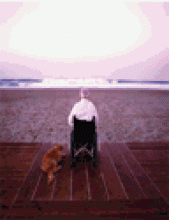Setting wait times is not an end in itself, but a step toward a sustainable health care system, says the federal Wait Times Advisor.
Dr. Brian Postl said that instead of setting „hundreds and hundreds of benchmarks” we need to look at ways to make the first 5 benchmarks (CMAJ 2005;174:299), set in December, work. Postl addressed attendees at a Jan. 16 conference sponsored by the Canadian Health Coalition (CHC), a non-profit group that promotes medicare.
Sustainability depends on innovative operational improvements that will ensure appropriateness of care and consistent management, said Postl, president and CEO of the Winnipeg Regional Health Authority. Physician buy-in is also essential.
Postl's report on phase 2 of the federal wait times project, which will stipulate elements of system transformation, is due this spring.
In broad terms, Phase 2 will include engaging researchers to tie evidence to benchmarks, adopting new business practices, such as common wait lists for provinces or regions, employing wait-time coordinators so patients „know where they are,” wait-time management training for health care professionals, and transparent waiting lists.
It will also outline the use of information technologies, including integration across health care systems and developing a registry.
Postl said physicians must also „take responsibility and change how they do business” by moving from a physician-based model to a program service-based culture. In the former, physicians „feel ownership of their patients” and refer them to, for example, a specific neurologist. Postl advocates a system where patients are assigned to a neurological service.
„We need to establish professional responsibility and accountability if this is going to work,” said Postl. „We need physicians as part of it; we can't do it without them.”

Figure. Using our head to reduce wait lists: about 5% of radiology imaging is unnecessary. Photo by: Corbis
„One of the key issues around benchmarks and wait times, which we've done a very poor job of in this country, is the area of appropriateness,” added Postl. There are some „remarkable inconsistencies across the country in how that's managed.”
A case in point is the use of radiology services. A pilot study by the Canadian Association of Radiologists (CAR) found that 86% of radiology requests were appropriate, but in 9% of cases a more appropriate test should have been ordered and in 5% of cases no imaging was necessary for diagnosis or treatment.
This means that 4 million exams per year could be eliminated, saving about $500 million or twice the annual equipment purchasing budget. This saving would mean the „elimination of wait times” and „the elimination of the need for private services,” CAR's CEO Normand Laberge, told the conference. „We need to make sure we only do tests that will have a benefit.”
Although these strategies are obviously needed, the problem is one of public perception, CHC Chair Kathleen Connors said at the conference. „The care guarantee has become the Trojan horse for for-profit health care.” In an attempt to meet care guarantees, provinces will allow more privately delivered care, she maintained.








